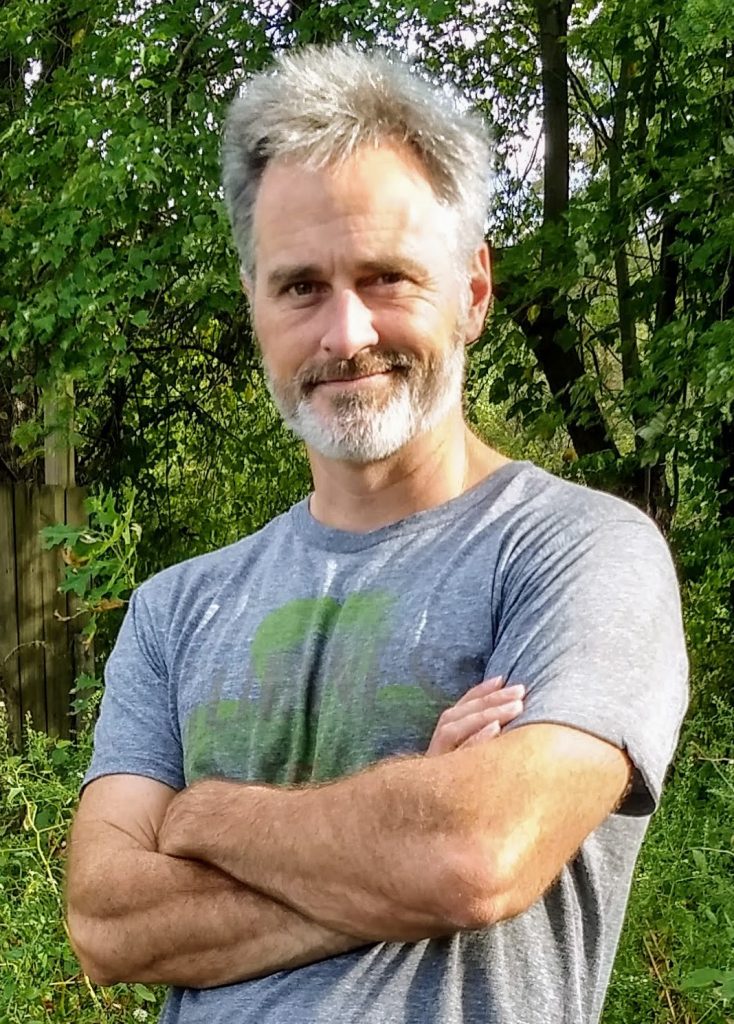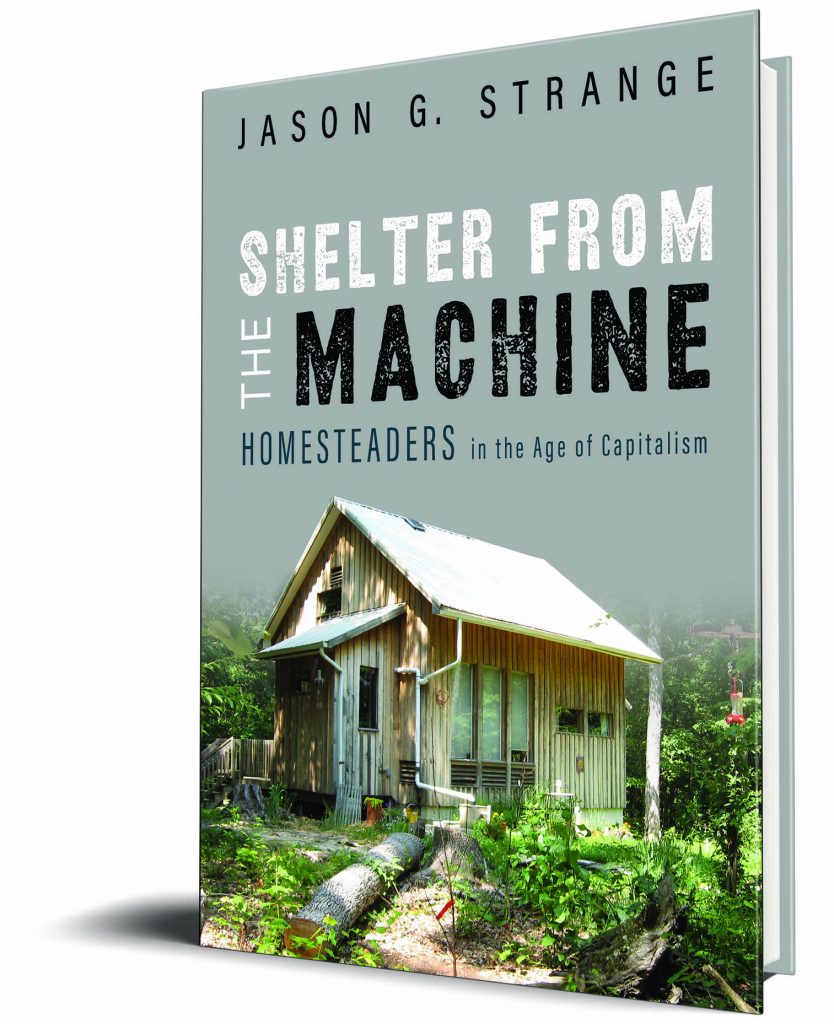Jason G. Strange, author of Shelter from the Machine: Homesteaders in the Age of Capitalism, answers questions about his why he chose to write about homesteaders and influences from his favorite books.
Q: Why did you decide to write this book?
My educational background is unusual for a professor. At sixteen, bored in high school, I dropped out, then spent much of the next dozen years traveling and working. I biked across the western US and crewed on a sailboat and lived in tents and vans. I worked as a carpenter and a potter, as a barista and burger flipper, and in farm fields as a corn dettasseler and blueberry raker. I didn’t finish college until I was almost thirty. My family had more books than money and as a child I fell in love with reading, so during all this exploring I carried a backpack stuffed with books and journals. Once, in the corn fields of Iowa, my tent was caught in a flash flood and the only thing that kept it from floating away was the stack of worn paperbacks in the corner. That stack of books was my ivory tower, my university, my real alma mater.
In many of the places where I’ve worked and lived – from the hollers of Appalachia to the Yurok Reservation in Northern California – a love of reading is unusual. Not, of course, because people are dumb, but because poverty is created through systematic oppression and dispossession, including educational dispossession. We live in a society where the most affluent youth are offered high-quality schooling and the least affluent are not. And this has huge impacts: reading and writing aren’t just academic endeavors; they’re tools for both self and social transformation.
Shelter from the Machine is partly about this educational dispossession: how it’s created and sustained, how it impacts the people who experience it. But it’s also partly a response. Once I entered grad school, in my early thirties, I encountered all sorts of useful social theories and analyses. But I was shocked to find that these ideas were couched, on purpose, in language that made them inaccessible to the people most in need of them – not my comfortable colleagues at Berkeley, but my colleagues in the fields and factories. There are many books about them, but not enough books for them, and that’s what I wanted to write.
Q: Who were your biggest influences?
Completing my doctoral dissertation forced me to work through the emotional challenges of a book-length project: the suffocating perfectionism and the self-doubt and the fearful procrastination. As a result, when I started thinking about Shelter from the Machine, I knew I’d be able to write an entire book. Problem was, I didn’t know how to write a good book. How do you create, in nonfiction, a sense of mystery and suspense? How do you blend story and analysis so they reinforce each other? How do you keep it interesting and lively and fun to read? I didn’t know how to do these things.

So I did what any tinkerer would do: I pulled a handful of my favorite books off the shelf and reverse-engineered them. The single most helpful book was The Sixth Extinction by Elizabeth Kolbert, which is so well crafted that you don’t see the craft unless you force yourself to look. It’s one of those books that reads like a series of fascinating adventures, but along the way you realize you’re also imbibing a bunch of important scientific ideas. I counted and charted and noted and dissected, examining everything from scene-setting to dialogue to narrative voice. I did the same thing with two other popular science books, The Desert Smells Like Rain by Gary Paul Nabhan and The Song of the Dodo by David Quammen. These books cover different topics than Shelter from the Machine, but they all share the same underlying goal: to take important ideas from within the world of science and scholarship – ideas that we all need to be familiar with – and frame them as stories. Any time Shelter stumped me, I reached for books like these for guidance and inspiration.
Q: What is the most interesting discovery you made while researching and writing your book?
I knew, early in my research, that contemporary homesteading and back-to-the-land movements were a rich topic. I also knew, in an abstract way, that things are deeply interconnected; that this laptop I’m typing on, for example, is connected to global history in a myriad of complicated ways. But the process of researching and writing about back-to-the-landers just kept revealing more interconnection. We could go visit a remote cabin at the back end of some off-road Kentucky holler, and it would seem, at first glance, like a place isolated and disconnected from society. And yet, understanding that cabin requires dealing with a huge range of social issues, from the history of colonization to the rise of capitalism and industry; from the distribution of education and literacy to the impacts of mainstream jobs upon those who work them. I love seeing those interconnections between seemingly disparate things. Whatever you’re interested in, whatever you want to work on – it’s right there. Beside you. Always.
Q: What do you like to read/watch/or listen to for fun?
My first love as a reader was science fiction and fantasy. I spent half my childhood and adolescence orbiting distant moons or wandering ancient forests that whispered with magic. In my twenties and thirties, I switched to reading nonfiction – pretty much anything on any topic, as long as it was well written. I learned so much from all this non-fiction reading that it changed my life, over and over. As I’ve gotten older, however, I’ve started reading science fiction and fantasy again. Simply put, the two most powerful things books can convey are stories and ideas, and I’m increasingly fascinated by how to combine those into one seamless whole. My current writing project reflects my history as a reader: I’m working on a science-fiction novel that draws upon, among other things, scholarly research into non-violence as a tool for social change.

